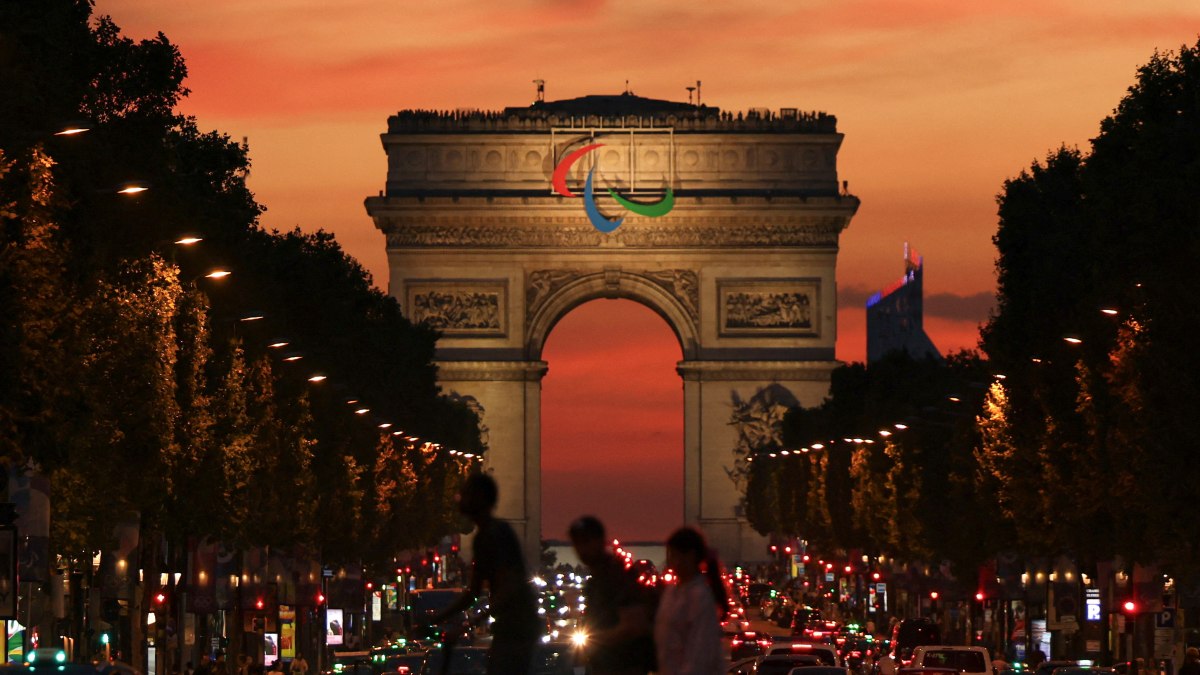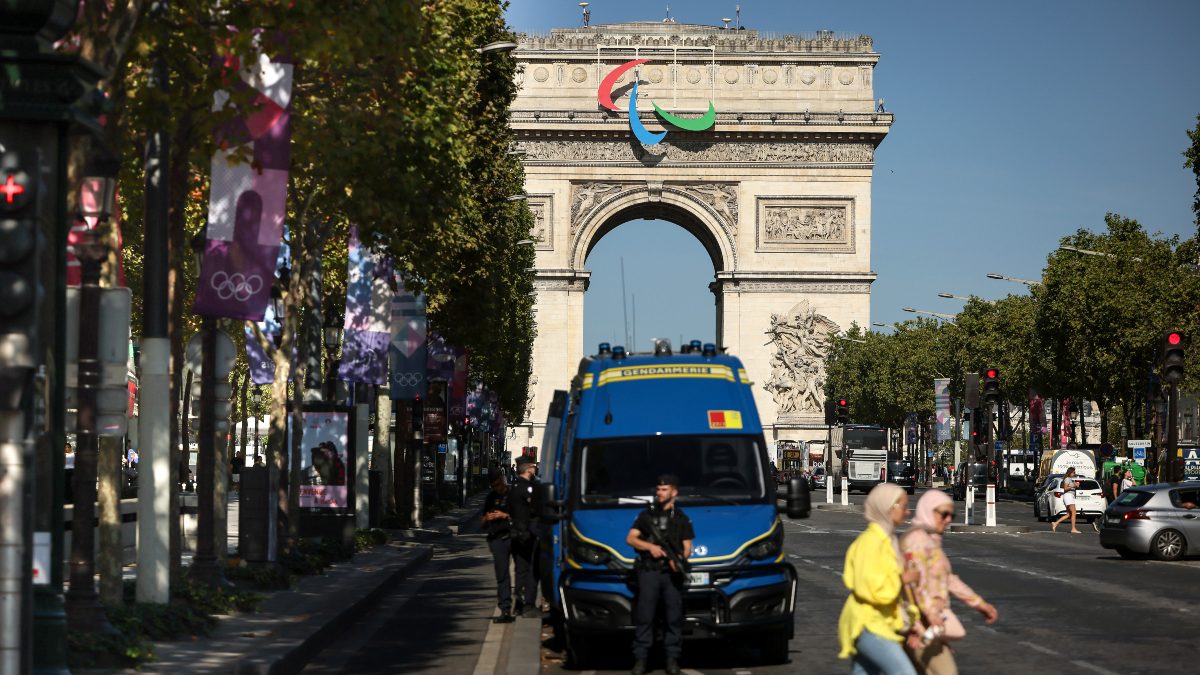Before Paris hosts the Paralympics for the first time ever, we take a detailed look at what the Paralympic Movement is all about, the meaning behind its logo and more. read more
)
Paris will be hosting the Summer Paralympics for the first time shortly after hosting the Olympics for a third time. Reuters
With Paris having successfully hosted the Summer Olympic Games for a third time, the multi-sporting carnival having come to an end with a star-studded closing ceremony at Stade de France, it’s time for us to shift our attention to the Paralympics that get underway less than a week from now.
While Paris had already hosted the Olympics in 1900 and 1924, this will be the first time the French capital hosts the world’s biggest sporting event for disabled athletes in which the same category in the same sport is further divided into sub-categories based on the type of disability.
Paralympics: Dates, history, Indian athletes, list of sports and all you need to know
This year’s Paralympics take place in Paris between 28 August and 8 September, and the Indian contingent sure intends to make it an occasion to remember by sending its largest Paralympic team ever. With an 84-member contingent, India hopes to win a lot more than the six medals that their able-bodied counterparts managed in the Olympics, perhaps even going past the 19 medals that they had won in Tokyo — their biggest haul till date.
Before the Paris Paralympics get underway, let’s take a detailed look at what the tournament is all about, including the meaning behind its logo and the movement behind it all.
What is the story behind the Paralympic logo?
The current Paralympic logo, also known as the Agitos (Latin for “I move), has been in place since 2019 and serves as the visual representation of the Paralympic movement. The logo was created by public relations firm Scholz and Friends in 2003 after they were commissioned by the International Paralympic Committee (IPC).
The logo they had come up with was meant to replace the Korean Tae-Geuk symbols that had been used between the Seoul 1988 and Athens 2004 Games.
The logo that was in use between 1994 and 2004 used Tae-Geuks — traditional Korean motifs — in red, blue and green colours. The new logo used the same colour set but decided to make the motifs a bit more circular, almost like a crescent moon. It would be another 15 years before the logo would be tweaked to its current form.
The colours that are used in the Paralympic logo are three of the most common colours found in national flags all over the world.
According to the Paralympics’ official website, the official logo represents “courage, determination, inspiration and equality”. Additionally, the three Agitos encircling a central point symbolise motion and emphasise the role of the Paralympics in bringing athletes from all over the world to compete.
The logo additionally reflects the Paralympic motto “Spirit in Motion” — highlighting the strong will of every Paralympian and the fact that they are always moving forward and never giving up.
What is the Paralympic Movement all about?
The Paralympic Movement, at its heart, is a global sporting movement for persons with disabilities, and that it intends to build a more inclusive world through Para-sport.
The Paralympic Movement also intends to achieve the following objectives through Para sport — change attitudes towards disabled people across the world, increase mobility and accessibility and ensure disabled people are offered equal opportunity to education, sport, healthcare and employment.
The Paralympics, together with para-athletes and para-sports, also intends to challenge the stigma associated with disability, empower social transformation and create a more inclusive society.
The Paralympic Movement includes all para-athletes and organisations that come under IPC including National Paralympic Committees (NPC).
When did the first Paralympics take place?
The Summer Paralympic Games made its debut in 1960 in Rome, taking place around the same time as the Olympics. The Winter Paralympics made its debut 16 years later Örnsköldsvik, Sweden.
Here are all the editions that have taken place so far along with their host city/cities:
1960: Rome, Italy
1964: Tokyo, Japan
1968: Tel Aviv, Israel
1972: Heidelberg, West German
1976: Toronto, Canada
1980: Arnhem, Netherlands
1984: New York City, USA/Stoke Mandeville, UK
1988: Seoul, South Korea
1992: Barcelona/Madrid, Spain
1996: Atlanta, USA
2000: Sydney, Australia
2004: Athens, Greece
2008: Beijing, China
2012: London, UK
2016: Rio de Janiero, Brazil
2020: Tokyo, Japan
How have India performed so far at the Paralympics?
Here’s how India have performed at the Paralympic Games since making their debut in 1972:
| 1960 Rome | Did not participate | - | ||
| 1964 Tokyo | Did not participate | - | ||
| 1968 Tel Aviv | - | - | - | - |
| 1972 Heidelberg | 1 | - | - | 1 |
| 1976 Toronto | Did not participate | - | ||
| 1980 Arnhem | Did not participate | - | ||
| 1984 UK/USA | - | 2 | 2 | 4 |
| 1988 Seoul | - | - | - | - |
| 1992 Barcelona | - | - | - | - |
| 1996 Atalanta | - | - | - | - |
| 2000 Sydney | - | - | - | - |
| 2004 Athens | 1 | - | 1 | 2 |
| 2008 Beijing | - | - | - | - |
| 2012 London | - | 1 | - | 1 |
| 2016 Rio de Janeiro | 2 | 1 | 1 | 4 |
| 2020 Tokyo | 5 | 8 | 6 | 19 |
| Total | 9 | 12 | 10 | 31 |
India’s Paralympics medal winners
| Murlikant Petkar | Gold | Swimming, Men’s 50m freestyle 3 | Heidelberg 1972 |
| Bhimrao Kesarkar | Silver | Men’s javelin throw L6 | Stoke Mandeville/New York 1984 |
| Joginder Singh Bedi | Bronze | Men’s javelin throw L6 | Stoke Mandeville/New York 1984 |
| Joginder Singh Bedi | Silver | Men’s shot put L6 | Stoke Mandeville/New York 1984 |
| Joginder Singh Bedi | Bronze | Men’s discus throw L6 | Stoke Mandeville/New York 1984 |
| Devendra Jhajharia | Gold | Men’s javelin throw F44/ 46 | Athens 2004 |
| Rajinder Singh Rahelu | Bronze | Men’s 56 kg | Athens 2004 |
| Girisha N Gowda | Silver | Men’s high jump F42 | London 2012 |
| Mariyappan Thangavelu | Gold | Men’s high jump F42 | Rio 2016 |
| Varun Singh Bhati | Bronze | Men’s high jump F42 | Rio 2016 |
| Devendra Jhajharia | Gold | Men’s javelin throw F46 | Rio 2016 |
| Deepa Malik | Silver | Women’s shot put F53 | Rio 2016 |
| Bhavina Patel | Silver | Women’s singles table tennis Class 4 | Tokyo 2020 |
| Nishad Kumar | Silver | Men’s high jump T47 | Tokyo 2020 |
| Avani Lekhara | Gold | Women’s 10m air rifle shooting standing SH1 | Tokyo 2020 |
| Devendra Jhajharia | Silver | Men’s javelin throw F46 | Tokyo 2020 |
| Sundar Singh Gurjar | Bronze | Men’s javelin throw F46 | Tokyo 2020 |
| Yogesh Kathuniya | Silver | Men’s discus throw F56 | Tokyo 2020 |
| Sumit Antil | Gold | Men’s javelin throw F64 | Tokyo 2020 |
| Singhraj Adhana | Bronze | Men’s 10m air pistol shooting SH1 | Tokyo 2020 |
| Mariyappan Thangavelu | Silver | Men’s high jump T42 | Tokyo 2020 |
| Sharad Kumar | Bronze | Men’s high jump T42 | Tokyo 2020 |
| Praveen Kumar | Silver | Men’s high jump T64 | Tokyo 2020 |
| Avani Lekhara | Bronze | Women’s 50m rifle 3 positions SH1 | Tokyo 2020 |
| Harvinder Singh | Bronze | Men’s individual recurve - open archery | Tokyo 2020 |
| Manish Narwal | Gold | Men’s 50m pistol SH1 | Tokyo 2020 |
| Singhraj Adhana | Silver | Men’s 50m pistol SH1 | Tokyo 2020 |
| Pramod Bhagat | Gold | Men’s singles badminton SL3 | Tokyo 2020 |
| Manoj Sarkar | Bronze | Men’s singles badminton SL3 | Tokyo 2020 |
| Suhas Yathiraj | Silver | Men’s singles badminton SL4 | Tokyo 2020 |
| Krishna Nagar | Gold | Men’s singles badminton SH6 | Tokyo 2020 |

 3 weeks ago
97
3 weeks ago
97
)
)
)
)
)
)
)
)
)
)
)
)
)
)
)
)
)
)
)
)
)
)
)
)
)
 English (US) ·
English (US) ·